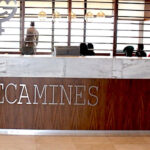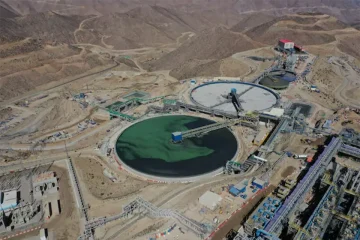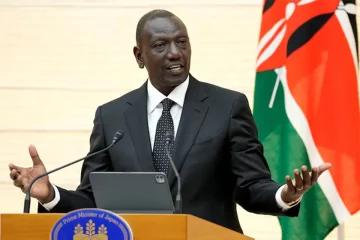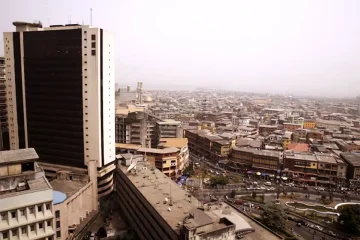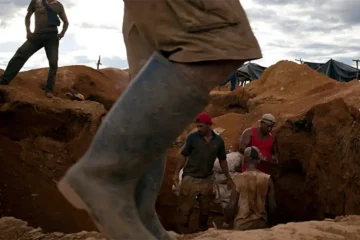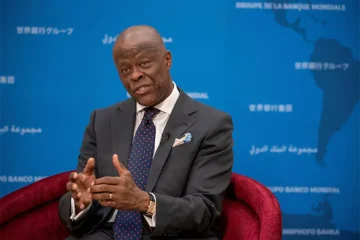THE recent US$750 million deal between Johannesburg-based Nyanza Light Metals and China’s East China Engineering Science and Technology Company (ECEC) marks a watershed moment in South Africa’s mining industry.
The agreement, reported by miningweekly.com, focuses on establishing a titanium dioxide pigment facility in Richards Bay’s Industrial Development Zone, signifying not only a crucial leap forward for Nyanza and South Africa but also aligning with China’s overarching strategy of investing in mineral beneficiation across Africa.
Nyanza CEO Donovan Chimhandamba, in a past interview on Mining Weekly, explained the economic relevance of the facility for the South African economy.
“South Africa currently consumes about 35,000 tons of titanium dioxide pigment and all of that is imported… Comparing what we’re exporting as ilmenite with what we pay, we end up being a net importer of titanium, yet it comes from our country,” he disclosed.
Titanium dioxide is used in coatings and in manufacturing sectors such as cosmetics and medicine. While the current market value for raw ilmenite is estimated at US$300 a ton, local processing of the pure pigment at the facility could fetch up to ten times higher returns, especially in global markets, according to the report.
A 12 MW solar facility is planned on-site, along with a battery storage system that will ensure a steady supply of electricity. Already, a US$10 million (R200 million) development centre and product testing centre have been commissioned, providing an annual sample of 700 tons of titanium dioxide pigment to offtake partners ahead of the full rollout of the main facility. 850 employees will be trained and upskilled at the centre.
The facility is the latest of many that China has established in the continent’s key mining hubs as the Asian economic giant seeks to extend its critical mineral dominance.
Last month, the Eurasian Resources Group announced a groundbreaking deal with China’s BRIMM Technology Group for a US $250 million cobalt beneficiation facility in the DRC. The facility will process high-quality lithium and is set for commissioning by the end of 2024.
In Zimbabwe, Zhejiang Huayou Cobalt, a Chinese mining company, through its Zimbabwean subsidiary, Prospect Lithium Zimbabwe, inaugurated a US$300 million lithium processing plant in July.
More facilities are expected in Zimbabwe. In a recent report from the Zimbabwe Investment & Development Agency (ZIDA), 121 investors from China were awarded licenses in the third quarter of 2023 to develop Zimbabwe’s lithium, mining, and energy sectors, which will result in up to US$2.79 billion flowing into the African nation.
A number of mineral beneficiation facilities have been planned in Madagascar, Zambia, and Tanzania, among others, targeting a range of minerals.
A 2023 Green Finance and Development Center report indicates that Chinese companies will double their ownership of overseas critical mineral mines, leveraging mainly the China Belt and Road Initiative.
According to the report, the value of Chinese investments and new contracts in the metals and mining sector has already exceeded $10 billion during the first half of 2023—a 131% growth rate compared to last year.
“Major growth countries of Chinese engagement were Bolivia, Namibia, Eritrea, and Tanzania, making Sub-Saharan Africa the fastest growing area of BRI engagement,” the GFDC report reads in part.
Notably, in Africa, China is focusing on financing mineral beneficiation facilities and revamping critical logistical infrastructure such as railways and ports.
Most recently, for instance, the China Civil Engineering Construction Corporation (CCECC) revealed it is negotiating a concession to operate and upgrade the 50-year-old Tanzania-Zambia Railway Line, also known as Tazara, a key route connecting Zambia’s Copperbelt to the port of Dar es Salaam.
China Harbour Engineering Company (CHEC) undertook upgrades on the port of Dar es Salaam in 2021, enabling a 26% increase in its handling capacity to about 17.65 million tons per year, according to the port’s website.
Chinese investments in the continent are, therefore, a step forward for the continent, especially in recent years when countries are pushing to revamp their critical mineral value chain by investing in local mineral processing facilities.
In a previous interview with bird story agency, South African energy transition executive Duma Sisulu emphasized the crucial need for local mineral processing facilities.
“Africa has significant reserves of the most critical minerals. However, access to quality assets remains difficult. The production of lithium-ion batteries, for instance, requires specialized precursor materials, including lithium carbonate, nickel sulfate, cobalt sulfate, and manganese sulfate,” he explained.
The latest UNECA report shows African economies can become major participants in global supply chains by harnessing their vast resources of materials, especially those needed by high-technology sectors and their own growing consumer markets.
“This is Africa’s moment to bolster its position in global supply chains as diversification efforts continue. It’s also an opportunity for the continent to strengthen its emerging industries, foster economic growth and create jobs for millions of its people,” UNCTAD Secretary-General Rebeca Grynspan said during the launch of the ‘Economic Development in Africa Report 2023’ in August.
Graphic: Hope Mukami
Useful link:- South Africa’s ilmenite poised for huge value boost following China signing
- China Belt and Road Initiative (BRI) Investment Report 2023 H1




